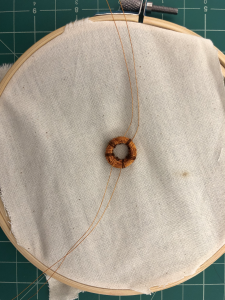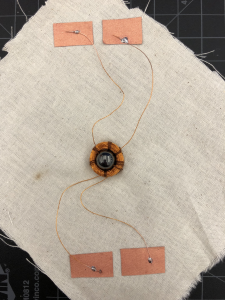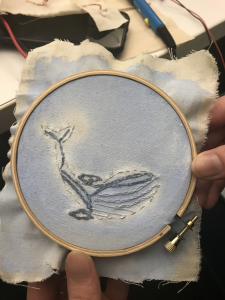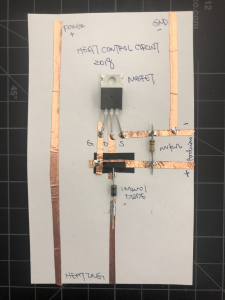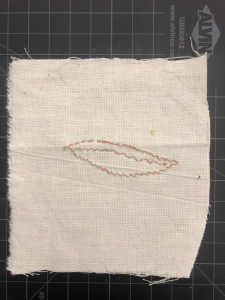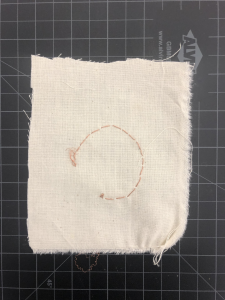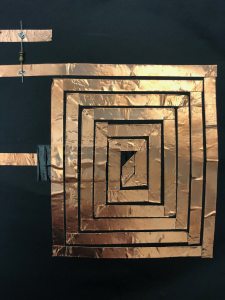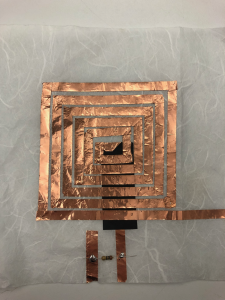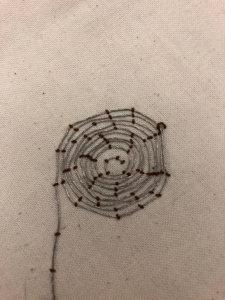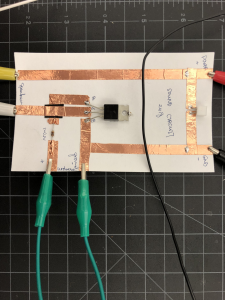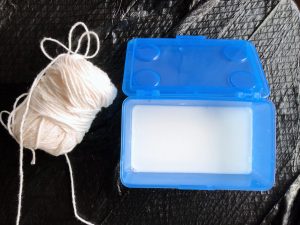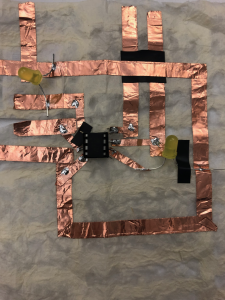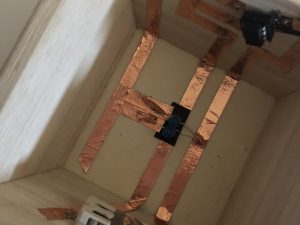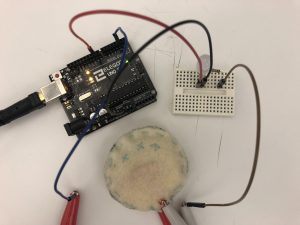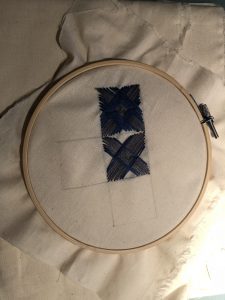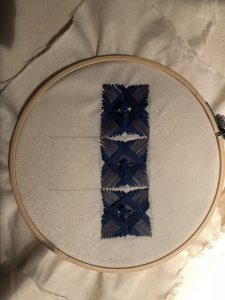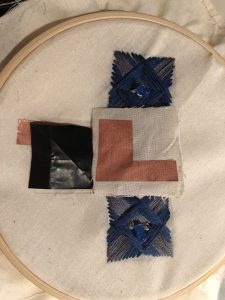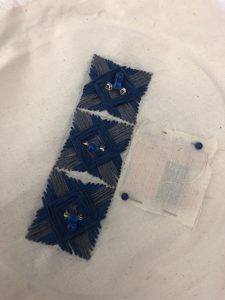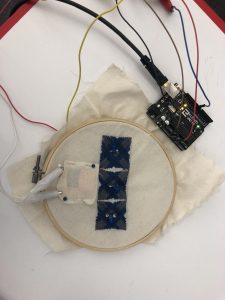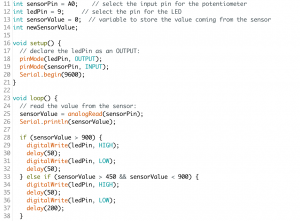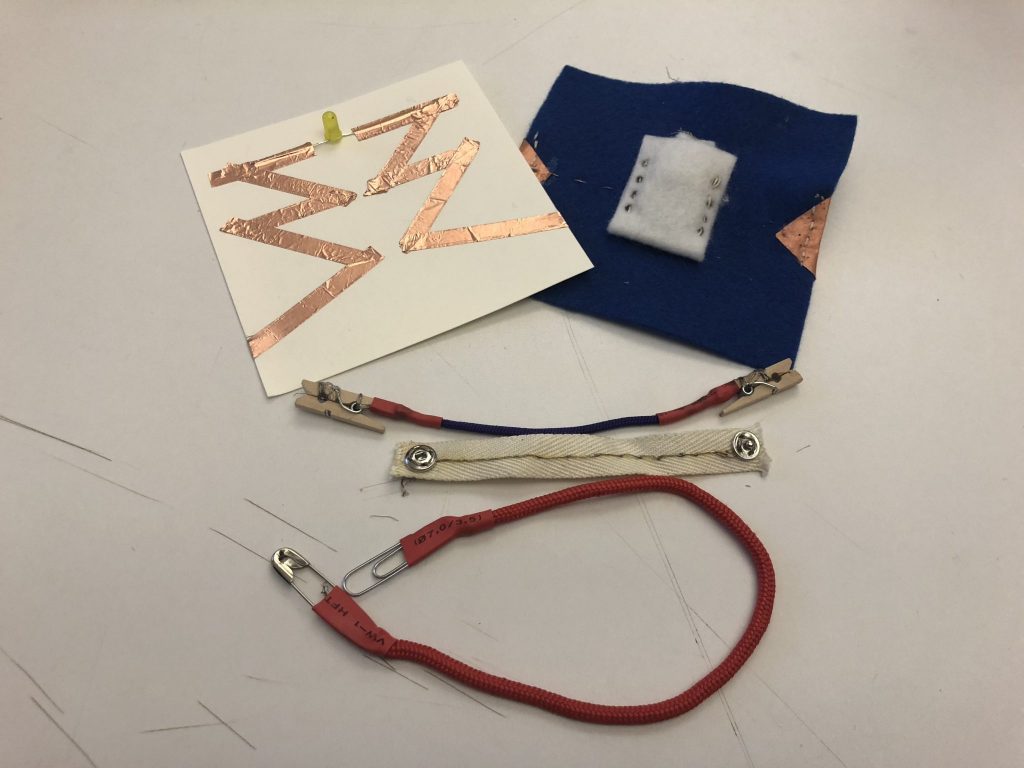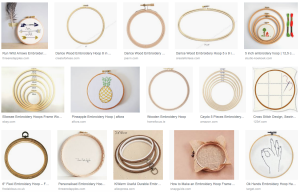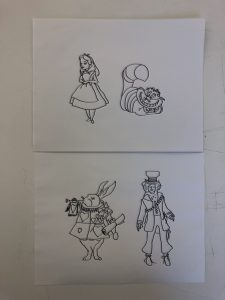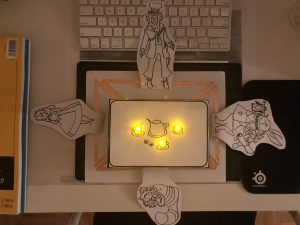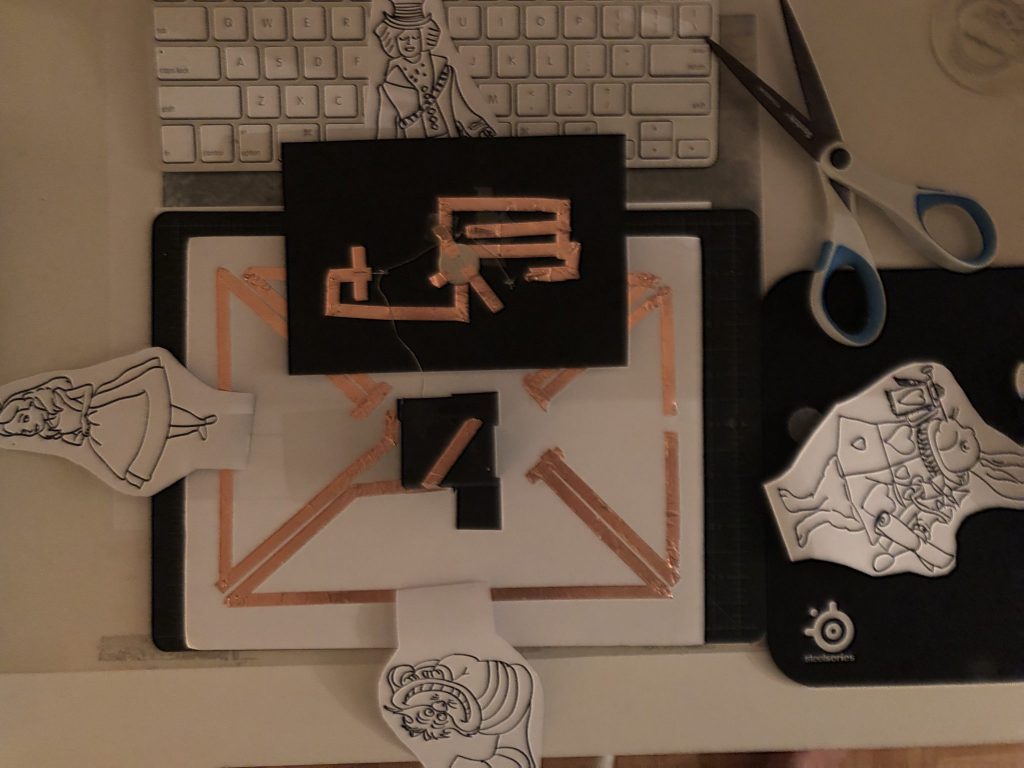Learning embroidery
I started this week by learning a new craft – embroidery. I always enjoy the texture created by embroidery and how simple but persuasive about the threads that form their own visual language. In this practice, I think I am a maker, learner, and craftsperson. I spent most of the time getting used to the techniques and trying different topics until I get to the current version: plants. My favorite tool inside this process is the needle threaders. I like the mechanism of how it works, smart and helpful. My most frustrating moment during the process is when I was standing at Michael’s and trying to decide what are the right tools. Following a simple YouTube video is definitely an option, however, due to the fact that there are so many tools targeting at so many things, it is better to learn the system first.
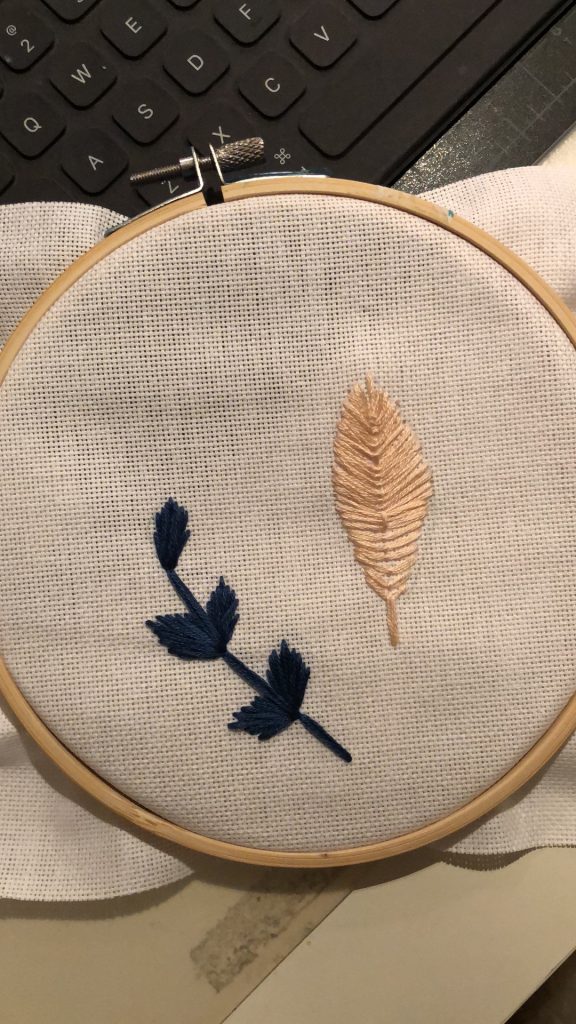
Swatches
Title – Trace the Light
Description – Trace the Light is a set of switches that play with the pattern and the control of lighting up LEDs. It uses a battery pocket, tilt switch or the most simple switch but you will need to solve the puzzle.
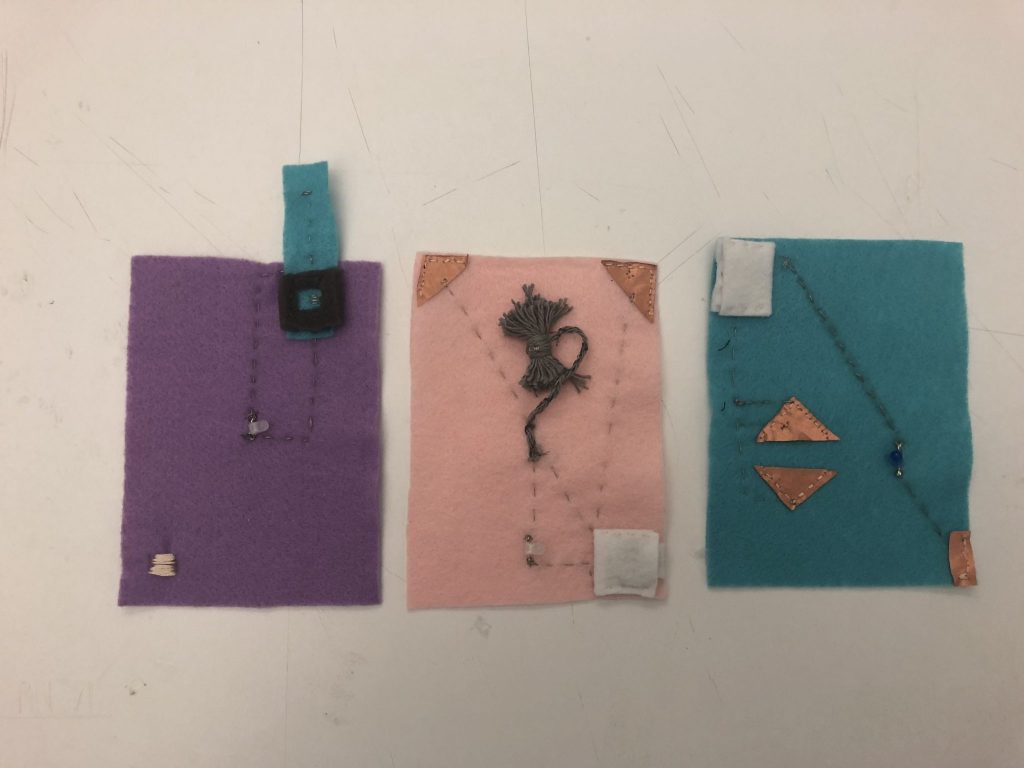

Materials – Felt, conductive thread, conductive fabric, yarn
Techniques – The main technique I used is hand sewing. The two key parts are using felt to make a small pocket that holds the battery and using yarn to make pom poms.
References – https://youtu.be/uMBjCjk19GU
I started with thinking about the batteries and then working on positioning different components on different places. I saw this video explaining how to use yarn pom pom as part of the tilt switch, and I really liked it. Although most of the soft circuits were quite similar, I altered the style of the felt and the color of the LED to make it a different piece in the same set. I did see how I gradually have a more mature planning when I hold the felt and start my first thread.
